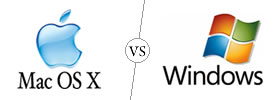Difference between C++ and Visual C++
Key difference: C++ is a general-purpose programming language, but is developed from the originally C programming language. It was developed by Bjarne Stroustrup at Bell Labs starting in 1979. C++ was originally named C with Classes. It was renamed C++ in 1983. Visual C++, on the other hand, is not a programming language at all. It is in fact a development environment. It is an “integrated development environment (IDE) product from Microsoft for the C, C++, and C++/CLI programming languages.” Microsoft Visual C++, also known as MSVC or VC++, is sold as part of the Microsoft Visual Studio app.

C++ is a general-purpose programming language. It is also developed from the original C programming language. It was developed by Bjarne Stroustrup at Bell Labs starting in 1979. C++ was originally named C with Classes. It was then renamed C++ in 1983.
C++ is a statically typed, free-form, multi-paradigm and a compiled programming language. The C++ programming language is widely considered to be an intermediate-level language, as it made up of both high-level and low-level language features. As compared to C, C++ incorporates object oriented features, such as classes, and other enhancements.
C++ has taken over some of the popularity of the C language. C++ is now currently implemented on a wide variety of hardware and operating system platforms. It is considered to be an efficient compiler to native code. It also incorporates systems software, application software, device drivers, embedded software, high-performance server and client applications as part of its application domains, as well as entertainment software such as video games.
C++ originally started out as an enhancement to C. It was designed to be source-and-link compatible with C. It added classes, virtual functions, operator overloading, multiple inheritance, templates, exception handling, etc. However, it eventually developed enough to be considered a programming language in its own right. It was originally ratified in 1998 as ISO/IEC 14882:1998.
C++ is now commonly used for hardware design. The design is first described in C++. It is then analyzed, architecturally constrained, and scheduled to create a register-transfer level hardware description language. It would do this through high-level synthesis.
Both free and proprietary C++ compiler software is available in the market. Some examples of these software include the GNU Project, Microsoft, Intel and Embarcadero Technologies. C++ has also had a major influence on other programming languages such as C# (C Sharp) and Java.
 Visual C++, on the other hand, is not a programming language at all. It is in fact a development environment. It is an “integrated development environment (IDE) product from Microsoft for the C, C++, and C++/CLI programming languages.” Microsoft Visual C++, also known as MSVC or VC++, is sold as part of the Microsoft Visual Studio app.
Visual C++, on the other hand, is not a programming language at all. It is in fact a development environment. It is an “integrated development environment (IDE) product from Microsoft for the C, C++, and C++/CLI programming languages.” Microsoft Visual C++, also known as MSVC or VC++, is sold as part of the Microsoft Visual Studio app.
In addition to other features, Visual C++ contains a C++ compiler. Essentially, one would provide a C++ compiler with instructions and it will then turn it into an executable. This means that one would essentially be using the C++ programming language to execute the application, but one is doing through the Visual C++. The advantage to using Visual C++, as opposed to C++ directly is that Visual C++ basically makes C++ compatible with the Microsoft environment. Hence, Visual C++ can be used to write code for the Microsoft Windows API, the DirectX API, and the Microsoft .NET Framework.
Other tools included in Visual C++ consist of a debugger, code editor, project manager, etc.
Image Courtesy: ocoudert.com, jungleide.com









Add new comment